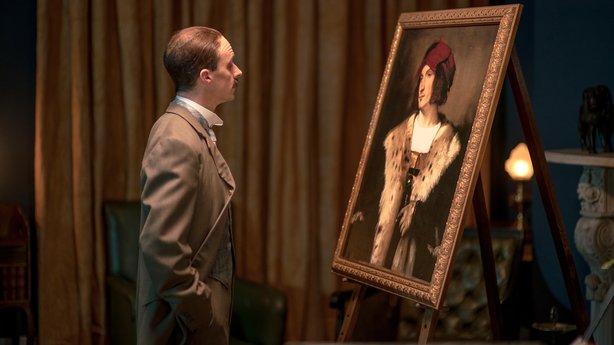Citizen Lane, the theatrical tribute to one of Ireland’s most significant cultural figures, is a fascinating and lovingly crafted insight into the story of Sir Hugh Lane, the man who brought modern art to the masses at the turn of the 20th century. Directed by Thaddeus O’Sullivan and written by Mark O’Halloran, it’s inventive blend of documentary and dramatic storytelling serve to bear out an engaging tale.
Eschewing a complete picture of Lane’s early life in favour of his later years as an established art dealer and collector, Citizen Lane features commentary and observation from the likes of biographer Robert O’Byrne, Dr. Morna O’Neill, a university lecturer on European art and Philip Hook, director of impressionist and modern art for Sotheby’s. Bolstering the narrative then is Tom Vaughan-Lawlor as Hugh Lane, along with an impressive cast of Irish actors, as we are treated to operatic interludes depicting key moments in Lane’s compelling life story.
Lane, born in Cork in 1875, spent much of his early life in England, before returning to Ireland with an already established reputation as a formidable art collector. A regular visitor to Coole, in Galway, the home of his aunt, Lady Gregory, he quickly counted among his friends those at the core of the cultural renaissance in Ireland in the early 1900s.
Lane became obsessed with the notion of bringing art to the working and middle classes, a belief that the beauty of impressionist paintings in particular shouldn’t be exclusively shared among the aristocratic society. He sought to build a place to house his collection, a national gallery where it could be viewed by everyone. The film charts in a completely captivating way the work that Lane tried to accomplish before his untimely death in 1915 aboard the Lusitania, and the legacy he left behind for Dublin and the Irish people.
It’s to the credit of Mark O’Halloran’s writing and Thaddeus O’Sullivan’s directing powers that the thespian scenes and factual commentary slot so neatly together into the overall framework. Vaughan-Lawlor, along with Marty Rae as William Orpen, Derphle Crotty as Lady Gregory, Lesley Conroy as Sarah Cecilia Harrison and Peter Campion as W.B. Yeats, all deliver notable performances, working from O’Halloran’s wonderfully florid script.
Citizen Lane is another fine entry for Irish cinema, itself undergoing a renaissance of kinds over the last few years. It stands as a testament to the man credited with establishing the first known public gallery of modern art in the world, the Dublin Municipal Gallery of Modern Art. The film doesn’t shy away from the fact that Lane was a divisive figure, but it rightfully never questions his visionary talent and accomplishments.

